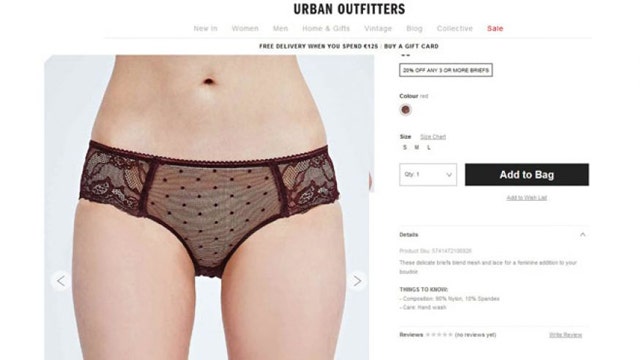Urban Outfitters’ ‘inner thigh gap’ problem
Clothier forced to remove image from online catalog
NEW YORK – Hip-and-trendy clothing company Urban Outfitters is being accused of promoting something called the “inner thigh gap,” a term used to describe the space between a thin woman’s thighs. The popular store was forced by the UK’s Advertising Standards Authority (ASA) to remove an image of a model with an “unhealthy” gap.
The image in question shows a model from the waist down wearing black polka-dot bikini briefs. A complaint was filed with the ASA saying the model was extremely underweight and could have a negative impact on young consumers. The ASA agreed and had the photo removed.
“We understood that Urban Outfitters’ target market was young people and considered that using a noticeably underweight model was likely to impress upon that audience that the image was representative of the people who might wear Urban Outfitters’ clothing, and as being something to aspire to,” the ASA said on their website. “We therefore concluded that the ad was irresponsible.”
According to the ASA, Urban Outfitters disagreed with their ruling, saying it is common practice to use skinny models in ads.
“They did not believe she was underweight and provided a copy of her agency profile, other photographs of the model and a list of clients for whom she had posed," the ASA stated. "They stated that her waist size was 23.5 inches, and provided documentation from outerwear brands showing they provided clothing for that waist size. They added that it was common practice to use slim models in the underwear industry, but they did not consider that the model was underweight or unhealthily thin; they considered she had a naturally tall and slim physique.”
BMG model Nikki French agrees that using a skinny model in a catalog should not be all that surprising.
“That’s the way our society is. We promote those skinny models," says French. "The majority of models are really thin and the agents will only take you if you are a specific size. It’s the way it’s been engrained in the fashion industry."
While the clothing company switched out the image in question, there were still other shots of models on their catalog site with similar physiques.
Dr. Danielle Sheypuk, a clinical psychologist who treats people with eating disorders, agrees with the ASA’s decision to have the image removed.
“The media has a huge impact on consumers because we all want to see ourselves in the ad, so we try to emulate it or parts of it,” Sheypuk told FOX411. “It negatively affects self-esteem.”
Many celebrities, including pop star Beyonce, have been accused of promoting what is known as “ITG” by Photoshop their legs to achieve said gap, or even having surgery.
“When a celebrity becomes aware that the photoshopping of their body using different apps is negatively impacting their fans it’s their responsibility to adjust accordingly,” Sheypuk said.
The doctor’s solution to Urban Outfitters and others is to “introduce diverse body types all shapes, sizes and abilities and disabilities.”
FOX411 reached out to Urban Outfitters and the ASA but did not receive comment.
WATCH: Four4Four: Farrah Abraham's plastic surgery body shockers







